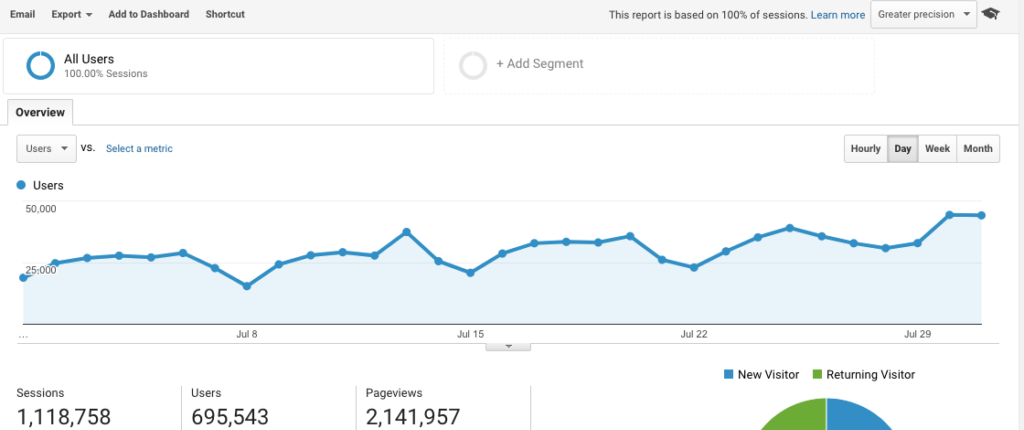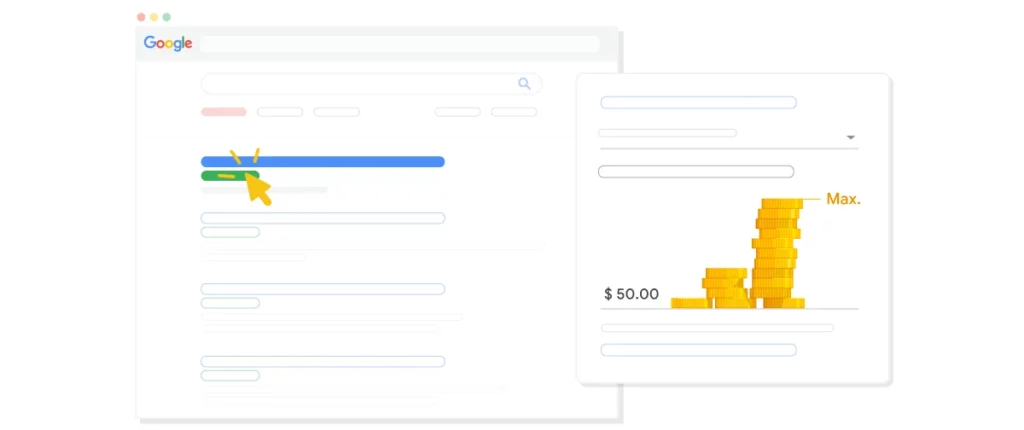The aim here is to keep things simple enough that any business or marketing leader can track exciting key numbers of digital marketing metrics to watch them grow and not get bogged down in too much detail.
Schedule a call with Nick Contact us
Key moments to watch those digital marketing metrics.
There are a ton of good reasons to monitor your digital marketing metrics – not least because they are likely the most important leading indicator of your income in the near future. There are some moments where they become indispensable.
Building a new website
The investment around a new website design at the heart of your digital marketing strategy is a key moment to track in order to establish your Return on Investment via simple digital marketing metrics.
Running a new inbound marketing campaign
As you start ramping up your content production to hit 3 articles a week ( the magic number) and those articles are powerfully written in line with ‘They Ask, You Answer’ principles then seeing your visitors go up from hundreds to hundreds of thousands will be incredibly exciting, I can assure you!
Spending money on digital marketing
Clearly digital marketing is a big investment and to make sure this money is providing a profit for the business it should be measured carefully – the digital marketing metrics are the key.
Metric 1: How many people visit your website?
With a website being the heart of your sales pipeline, the big digital marketing metric to watch is simply how many people are visiting it.
Within this number you’ll probably want to look at some or all of the following numbers which tell you how people have found your website.
Traffic by Channels – where visitors come from
Organic Search – people who arrive from a search engine ( Probably Google)
Direct visits – people who typed your url in ( it’s not going to be many these days)
Referrals – people who clicked a link on another size.
Social Media – people who came to you from a social media platform
Paid visitors – people who visited thanks to a paid promotion.

Digital Marketing Metrics
Metric 2: Inbound Links
This may sound a bit geeky and technical but it is a really important number. More inbound links means Google will view you as an authority in your area. It’ll also mean that your content is working well – lots of folks think it is good enough to send their precious site visitors to. Big sites have a number here measured in hundreds of thousands or millions. For a typical SME getting over 1000 is an important first goal.
Metric 3: How much is Google overcharging you?
A very serious issue and one that is widely unknown is that Google will take a look at your complete digital footprint and judge your online presence. You will then receive a score and Google will charge you up to 400% MORE than your competitors if you do not have everything organised correctly.
This score is a big subject but we often meet companies that simply cannot understand how their rivals are making Google ads work where they cannot make them profitable.

Metric 4: How many pages did they read?
Bounce rate
Your bounce rate shows the number of visitors who simply clicked away the moment they landed on your site. Clearly your target number here is zero. This is an important number and you must take immediate action if it is high. We’d hate to see a number above 20% but aim for 10% or less.
Ok let’s assume we have bounce rate under control. What next?
Aim to have your visitors read 30 pages of content.
The author and business owner, Marcus Sheridan looked into the minimum number of pages that people who ultimately ended up buying a swimming pool and he found a fascinating statistic. He found that any one who viewed 30 pages was highly likely to buy. If they had viewed less it was highly unlikely.
He subsequently wrote a best-selling book, built a huge multi-million dollar swimming pool business and an inbound marketing agency on his findings so we can safely say that this number is true for all businesses.
Metric 5: How many people took action that helped you?
This metric or group of stats is designed to put a monetary value on the actions people take on your site.
Some stats that help build a picture:
- Cost per visitor
- How much it took to get someone to land on your site
- Revenue per visitor
- How much revenue you made divided by the number of site visitors
- Cost per conversion
How much money you spent to get people to do an action – e.g. sign up to your newsletter, fill in a contact form, download a white paper etc. It’s a useful number.
Ultimately Cost-per-Acquisition is the key digital marketing metric.
Unlike the Cost-per-Conversion this number is all about how much money you spent to get someone to become a paying customer. For any business which predominantly gains business via the internet it is the key number.
Sometimes we under-invest in digital marketing because we don’t consider that if, for example, our customers have a lifetime value of £35,000 then spending say £10,000 to acquire them wouldn’t perhaps be a bad idea.
Metric 6: How much money are you making?
Digital Marketing is ultimately only done for one reason: to grow your business. We will never stop getting terribly excited when we see a new lead come into our inbox. Digital marketing can feel like a huge expense but, done well, it is the key that will unlock your business’s future and if you’re the marketeer that delivers that growth then a pay rise won’t be far away.
‘I need to find out some of these numbers right now’.Get in touch with us today using our contact form and we’ll be able to show you how to find these numbers for your business.





